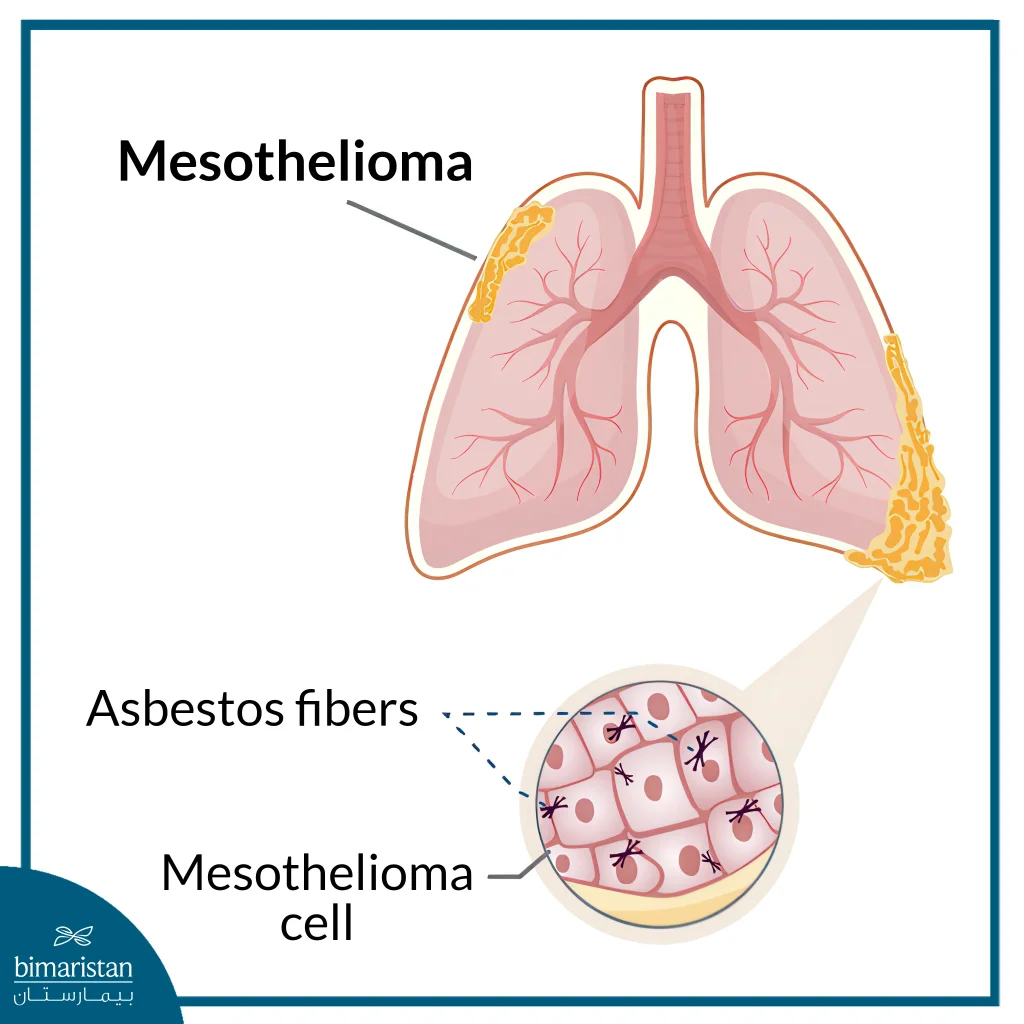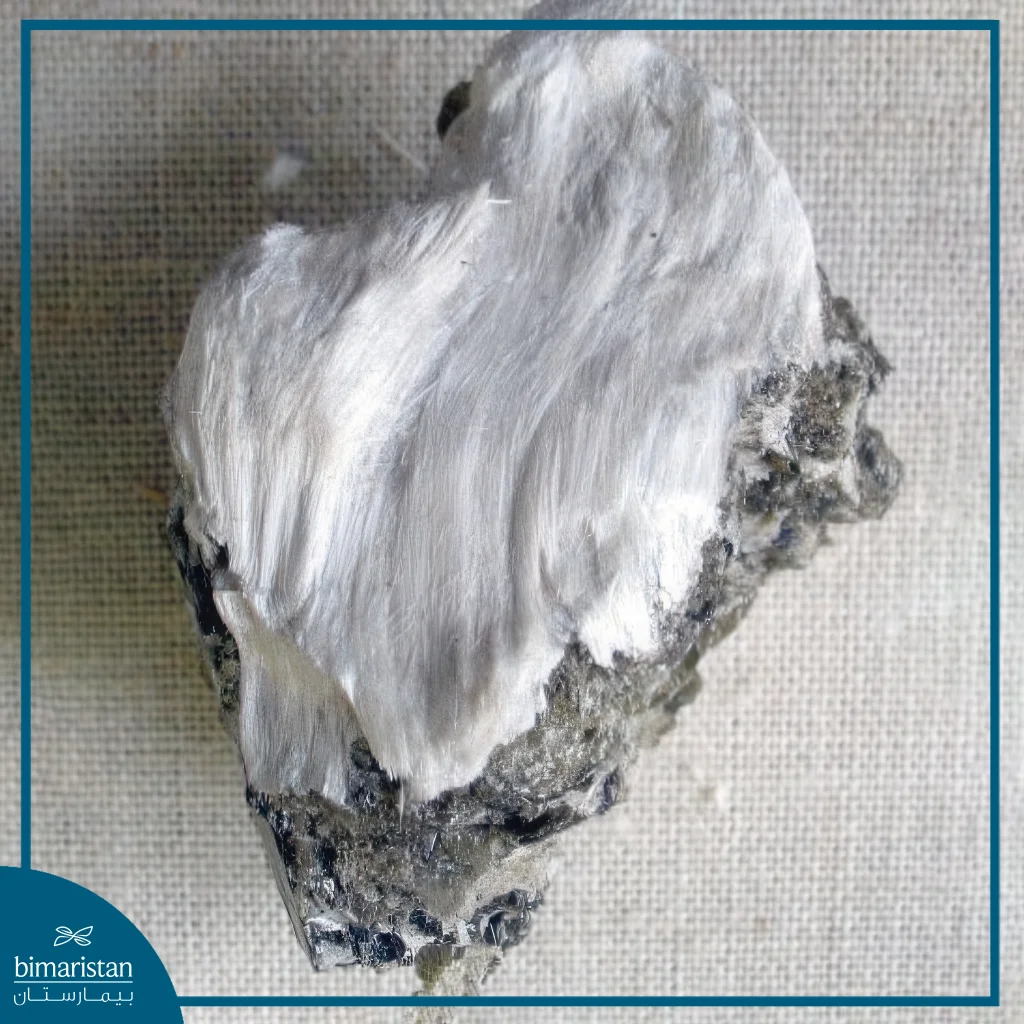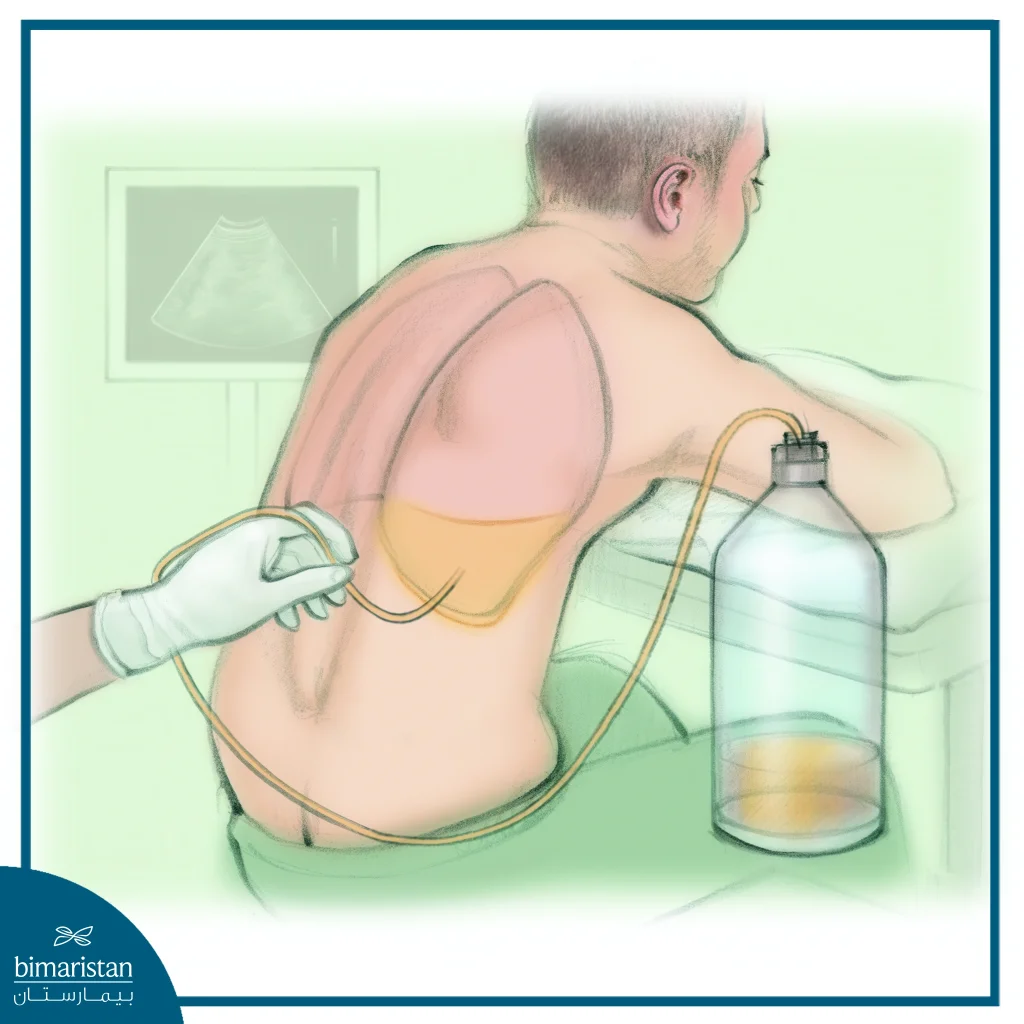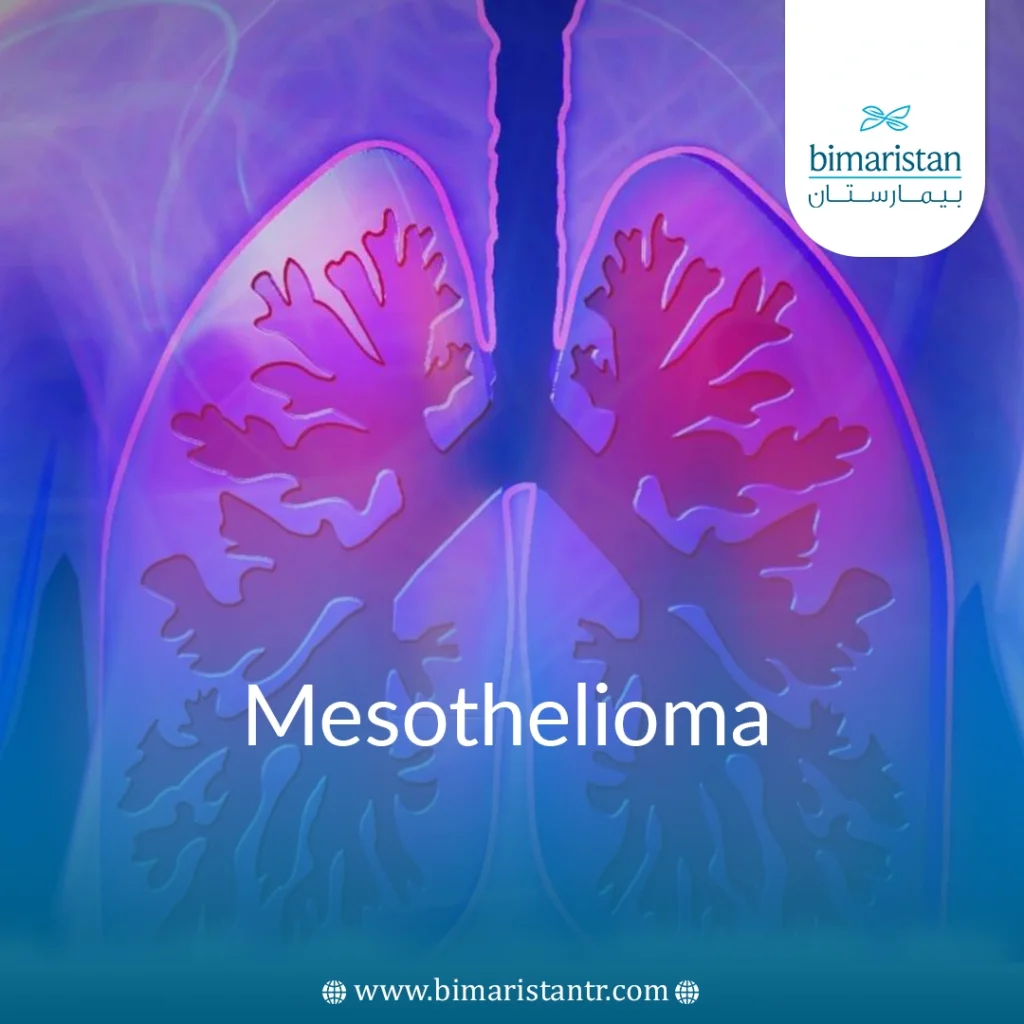Pleural mesothelioma is a rare cancer that grows around the lungs and chest due to asbestos exposure in most cases. Discover the contemporary treatment methods available in Turkey.
What is pleural mesothelioma (mesothelioma cancer)?
Pleural mesothelioma is a rare cancer that grows around the lungs and chest.
Exposure to asbestos (a material used in construction) accounts for most cases of this type of cancer.
Malignant (cancerous) pleural cancer forms in the pleura.
This thin membrane of tissue lines the chest walls and covers the lungs.
This type of cancer takes its name from the mesothelium, the lining that protects your internal organs.
This layer produces a substance that prevents your organs from sticking together.
A cancer that forms in any part of the mesothelium is called mesothelioma.

How common is pleural mesothelioma?
Mesothelioma is diagnosed in nearly 3,000 Americans each year.
Pleural mesothelioma accounts for 3 out of 4 of these cancers.
What is asbestos?
Asbestos is the name for a group of strong natural mineral fibers that are resistant to fire and chemicals.
Asbestos has been used for years in construction and industry.
The fibers are found in shingles, floor tiles, and ceilings in many homes.
Manufacturers use asbestos in automobile brakes and linings, among many other uses.
Asbestos fibers are only harmful when they are airborne, and are generally not considered hazardous if they are not moved and dispersed in the air.

Who is at risk of developing mesothelioma cancer?
Asbestos is naturally found in air, water, and soil.
Almost everyone breathes in small amounts of asbestos throughout their lives.
This minor exposure does not increase your risk of cancer.
Most people who develop pleural mesothelioma have high levels of exposure to asbestos over long periods of time.
This exposure usually occurs on the job.
Occupations most commonly exposed to asbestos include:
- Auto, factory, and railroad workers
- Restoration workers and demolition crews
- Construction workers and builders, including shipbuilders
- Firefighters
- Insulation manufacturers and installers
- Miners
- Plumbers
Mesothelioma symptoms and causes
What causes pleural mesothelioma?
For eight out of 10 people with pleural mesothelioma, exposure to asbestos is the primary cause.
But most people who are exposed to asbestos never develop this cancer.
In rare cases, exposure to high levels of radiation (such as radiation therapy for another cancer) can lead to pleural mesothelioma.
Airborne asbestos fibers break down into particles too small to see. When you breathe them in, the particles lodge in your lungs. These particles can cause scarring and inflammation. In some cases, they cause cell changes that lead to cancer.
Asbestos-containing materials are safe as long as they remain in place. Asbestos poses a health risk only when the material is disturbed by releasing fibers into the air.
What are the pleural mesothelioma symptoms?
It may take 30 to 50 years after asbestos exposure for pleural mesothelioma to appear.
The early signs of this cancer can be annoying but easy to get rid of.
The main symptoms are constant chest pain and shortness of breath.
Other symptoms include:
- Coughing and hoarseness
- Difficulty swallowing (dysphagia)
- Lower back pain
- Puffiness of the face and arms
- Unexplained weight loss
Mesothelioma diagnosis and tests
How is pleural mesothelioma diagnosed?
Your doctor will perform a physical examination, review your medical history, and assess your risk factors.
You may get one or more of these tests:
- Blood tests to check for high levels of these substances (Fibulin 3 and mesothelin-related soluble peptides) are often associated with this cancer.
- A chest X-ray to look for changes in the lungs, such as thickening of the pleura or pleural effusion (fluid between the lungs and chest wall).
- Imaging tests, such as magnetic resonance imaging (MRI), computed tomography (CT), or positron emission tomography (PET), are used to check for signs of cancer.
- Examination of pleural fluid cells and biopsy of the fluid and tissue for cancer cells.
Mesothelioma Management & Treatment in Turkey
What are the complications of pleural mesothelioma?
The disease increases the risk of pleural effusion.
This condition occurs when fluid builds up between the lungs and chest wall, making it very difficult to breathe.
Your doctor may perform a procedure called a thoracotomy to drain the fluid.
He or she inserts a thin needle into the space between your lungs and chest wall to remove fluid.
Some people may need a catheter (a thin hollow tube) to drain the fluid continuously.
Mesothelioma treatment
-
Surgery
Patients whose disease has not spread too far may be eligible for surgical treatment.
This is the best way to remove large portions of the affected tissue.
-
Chemotherapy
Chemotherapy is the go-to treatment for any type of cancer and is the traditional way of killing cancer cells in the body. This disease requires the use of special chemotherapy solutions to give the desired results.
-
Radiation
Radiation is another traditional cancer treatment.
Radiation therapy is non-invasive and helpful for all stages and types of this cancer.
-
Immunotherapy
Drugs that activate the immune system to target and kill mesothelioma cells are known as immunotherapy.
This type of treatment is becoming more common.
-
Multimodal Therapy
Multimodal therapy is a combination of various treatments mentioned above. Doctors now believe that the best way to extend survival time is to use multimodal methods such as surgery and chemotherapy.
-
Clinical trials
Every mesothelioma treatment started in a clinical trial.
Trials allow researchers to test new treatments and give patients access to more options.
Treatment types
Mesothelioma doctors create a treatment plan based on the patient’s diagnosis.
The doctor considers the stage of the patient’s cancer, the cell type, and the location of the tumor.
These factors play a crucial role in determining the appropriate type of treatment for the patient.
-
Healing therapy
Doctors use curative treatments (aimed at achieving complete recovery from the disease) to remove mesothelioma from the patient’s body.
Patients diagnosed with pleural mesothelioma – and eligible for curative treatment – may undergo one of the typical pleural mesothelioma surgeries: Extrapleural pneumonectomy (EPP) or pleurectomy with debridement (P/D).
People diagnosed with peritoneal mesothelioma may undergo cytoreduction, which doctors often combine with heated chemotherapy in a procedure called cytoreductive aspiration with HIPEC.
-
Palliative treatment
Treatment is palliative when your doctor uses it to relieve pain caused by symptoms.
The most common palliative treatments drain fluid buildup in the chest or abdomen.
Most patients with pleural disease have their chest blown out.
Those with peritoneal disease undergo laparotomy.
-
Multimodal Therapy
Multimodal therapy is a combination of two or more treatments, usually surgery and chemotherapy or radiation therapy.
Using multiple treatments, doctors can attack mesothelioma in more than one way.
For example, using cytoreductive surgery to remove most of the tumor, and heated chemotherapy to destroy any remaining cancer cells.
A study by researchers at Dana-Farber Cancer Center – one of the highest-ranked cancer centers in the United States – showed that 22 percent of patients lived at least 5 years after multimodal therapy.
Mesothelioma surgery
\Surgery for patients with pleural mesothelioma is done either via video-assisted thoracoscopy or through a large incision.
- Pleurectomy with decortication(P/D)
Pleurectomy with decortication (P/D) is a surgical procedure that doctors use to remove the lining of the lung that is most affected by tumor growth and any tumors on the surface of the lung itself.
If mesothelioma has spread beyond the lung lining, your doctor may also remove parts of the diaphragm and pericardium (the protective lining of the heart).
The goal of using this type of surgery is to relieve the symptoms of mesothelioma without sacrificing the lungs.
90% of patients who undergo the procedure show a reduction in symptoms and retain 100% of their respiratory function.
- Extrapleural pneumonectomy(EPP)
Doctors use extrapleural pneumonectomy (EPP) to remove the entire lung and nearby tissue affected by mesothelioma.
To prevent the disease from returning, the diaphragm, nearby lymph nodes, and the lining of the heart may also be removed.
Surgery for patients with peritoneal mesothelioma
- Peritonectomy. Surgeons use peritonectomy to remove any part of the peritoneum (the protective lining of the abdomen) affected by tumor growth.
They also remove any visible tumors that may have spread to nearby organs, such as the diaphragm or stomach. - Cytoreductive surgery:
Cytoreductive surgery is when the surgeon combines multiple peritonectomies with chemically removing the mesothelioma completely from the abdominal cavity.
Doctors often combine cytoreductive surgery with heated chemotherapy in a procedure called cytoreduction with HIPEC to maximize its effectiveness.
Chemotherapy for mesothelioma
Chemotherapy is the use of drugs to attack and kill the cancer. Its effectiveness depends on your diagnosis, specifically the stage of your cancer and the location of your mesothelioma.
Chemotherapy drugs work best when they are combined with other drugs or with surgery.
Doctors use chemotherapy before surgery, during surgery, or after surgery.
There is a difference in management between systemic chemotherapy and intraoperative chemotherapy:
- Systemic therapy Systemic chemotherapy travels through the bloodstream, attacking any cancer cell it comes in contact with.
Your doctor will give you systemic chemotherapy in pill form or through a vein. - Treatment during surgery. Your doctor administers medications during surgery.
Depending on the procedure, he or she administers chemotherapy directly into the lungs or into the abdominal cavity and usually heats the drugs to increase their effectiveness in killing the cancer.
Side effects
Depending on your tolerance, chemotherapy may affect you severely, mildly, or not at all.
Its side effects slowly disappear after treatment and vary according to the type of drug, the amount of dose, and the length of time it’s given.
Common side effects during chemotherapy are:
- Hair loss
- loss of appetite
- nausea
- diarrhea
- fatigue
Radiation therapy for mesothelioma
Radiation therapy is the use of high-energy rays to kill mesothelioma cells.
Doctors may use radiation on its own – as a palliative treatment – or combine it with chemotherapy and/or surgery.
In some types of radiation therapy, patients may not experience as many side effects as chemotherapy because doctors can target tumors directly, minimizing damage to healthy cells.
Radiation treatments commonly used for mesothelioma patients include:
-
Three-dimensional radiation therapy (3D-CRT)
Using 3D scans of the tumor, doctors adjust the amount and intensity of each radiation dose according to its size and shape.
Adjusting the amount of radiation helps doctors target tumors more effectively and minimize damage to the healthy, non-cancerous cells surrounding the tumors.
-
Intensity modulated radiation therapy (IMRT)
IMRT is an advanced form of 3D-CRT. Doctors use computers to adjust the amount and intensity of the beam as it passes through the tumor.
Researchers in a recent study demonstrated that IMRT used after extrapleural pneumonectomy (EPP) resulted in a median overall survival rate of just over two years.
Of these patients, 41% lived for an additional three years after the operation.
Side effects of radiation therapy
Doctors must use high doses of radiation to get the same cancer-killing effectiveness as chemotherapy drugs.
As doctors increase the amount and intensity of radiation, the chances of the radiation destroying healthy cells also increase, and more side effects can occur.
Radiation therapy can cause the following side effects:
- Esophagitis
- Redness of the skin
- Fatigue
- Nausea
- Hair loss
Palliative treatments for mesothelioma
Doctors use palliative treatments to relieve pain caused by symptoms in all stages of this cancer.
Doctors may use them to supplement curative treatments for patients diagnosed with stage I or stage II of this cancer.
Stage III and IV patients receive palliative treatment to reduce pain and improve their quality of life.
Several types of palliative treatments are available for patients with this cancer.
- Thoracentesis
Thoracentesis is the drainage of excess fluid from the pleural cavity – the space between the inner and outer lining of the lungs – with a needle.

- Camera-assisted paracentesis with powder application
With the help of a camera, the doctor drains the excess fluid from the pleural cavity and seals it with talc, a substance also known as talcum powder. The talc causes an inflammatory reaction that closes the pleural space.
Over time, scar tissue forms, preventing further fluid from collecting.
Doctors use this procedure to reduce chest pain and relieve pressure caused by fluid buildup.
- Partial pleurectomy
Doctors use partial pleurectomy to remove the lining of a lung with mesothelioma.
Tumor growth hardens the lining of the lung, making it difficult to breathe.
Removing part of the hardened lining allows the lung to reexpand and makes breathing easier.
- Abdominal paracentesis
It is the drainage of excess fluid from the abdominal cavity.
The fluid is drained through a needle.
It relieves the pressure caused by the accumulation of fluid in this space.
Too much fluid in the abdominal cavity puts pressure on the organs, leading to discomfort and severe pain.
New treatments in clinical trials
If you don’t qualify for traditional treatments, such as surgery or chemotherapy, participating in a clinical trial may give you a chance to improve your condition with new treatments.
In clinical trials, researchers have developed new ways to fight mesothelioma, such as immunotherapy, a treatment that strengthens the immune system and helps kill mesothelioma cells.
Prevention
How can I prevent pleural mesothelioma?
Since the late 1970s, the Environmental Protection Agency (EPA) has regulated the use of asbestos in building materials.
The EPA also regulates the cleanup of asbestos-containing materials.
Many homes, buildings, cars, and products made before 1980 are still likely to contain asbestos.
Workers at risk of asbestos exposure should wear protective gear to prevent breathing asbestos.
It is also important to avoid staining clothes, hair, and shoes with particles.
Before remodeling an older home, have an asbestos expert inspect your home.
Removing asbestos from ceilings or walls is not necessary if they are not subject to movement.
If you’re planning to demolish a wall or drill into an asbestos-containing surface, you need to hire an asbestos abatement company to do the job.
You should never attempt to remove asbestos-containing materials yourself.
This step is important to protect your family’s health.
Outlook / Fate of the disease
What is the outlook for people with pleural mesothelioma?
There is no definitive cure for pleural mesothelioma. Treatments can prolong life, relieve symptoms, and help you feel more comfortable.
You can also try treatments that show promise in clinical trials.
Unfortunately, for most people with pleural mesothelioma, the average life expectancy is one to four years after diagnosis.
Sources:

